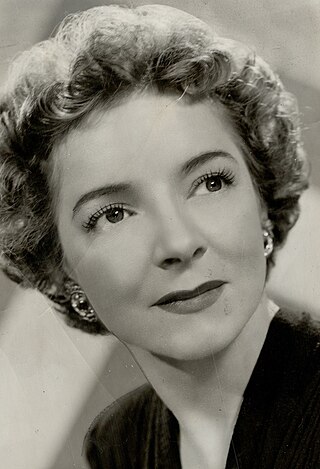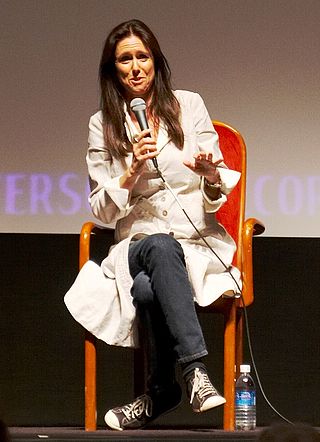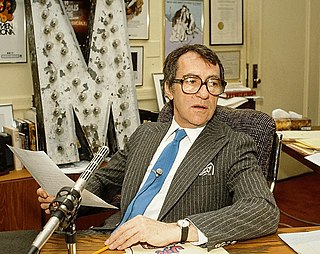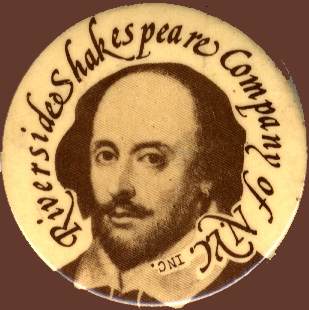
Helen Hayes MacArthur was an American actress whose career spanned 82 years. She eventually received the nickname "First Lady of American Theatre" and was the second person and first woman to have won an Emmy, a Grammy, an Oscar, and a Tony Award. She was also the first person to win the Triple Crown of Acting. Hayes also received the Presidential Medal of Freedom, America's highest civilian honor, from President Ronald Reagan in 1986. In 1988, she was awarded the National Medal of Arts.
Sir Trevor Robert Nunn is an English theatre director. He has been the artistic director for the Royal Shakespeare Company, the Royal National Theatre, and, currently, the Theatre Royal Haymarket. He has directed dramas for the stage, including Macbeth, as well as opera and musicals, such as Cats (1981) and Les Misérables (1985).

Julie Taymor is an American director and writer of theater, opera, and film. Her stage adaptation of The Lion King debuted in 1997 and received eleven Tony Award nominations, with Taymor receiving Tony Awards for her direction and costume design. Her 2002 film Frida, about Mexican artist Frida Kahlo, was nominated for five Academy Awards, including a Best Original Song nomination for Taymor's composition "Burn It Blue." She also directed the 2007 jukebox musical film Across the Universe, based on the music of the Beatles.

Joseph Papp was an American theatrical producer and director. He established The Public Theater in what had been the Astor Library Building in Lower Manhattan. There Papp created a year-round producing home to focus on new plays and musicals. Among numerous examples of these were the works of David Rabe, Ntozake Shange's For Colored Girls Who Have Considered Suicide When the Rainbow Is Enuf, Charles Gordone's No Place to Be Somebody, and Papp's production of Michael Bennett's Pulitzer Prize–winning musical A Chorus Line. Papp also founded Shakespeare in the Park, helped to develop other off-Broadway theatres and worked to preserve the historic Broadway Theatre District.

Roger Rees was a Welsh actor and director, widely known for his stage work. He won an Olivier Award and a Tony Award for his performance as the lead in The Life and Adventures of Nicholas Nickleby. He also received Obie Awards for his role in The End of the Day and as co-director of Peter and the Starcatcher. Rees was posthumously inducted into the American Theater Hall of Fame in November 2015.

Alan Armstrong, known professionally as Alun Armstrong, is an English character actor. He grew up in County Durham in North East England, and first became interested in acting through Shakespeare productions at his grammar school. Since his career began in the early 1970s, he has played, in his words, "the full spectrum of characters from the grotesque to musicals... I always play very colourful characters, often a bit crazy, despotic, psychotic".

The Hayes Theater is a Broadway theater at 240 West 44th Street in the Theater District of Midtown Manhattan in New York City. Named for actress Helen Hayes, the venue is operated by Second Stage Theater. It is the smallest Broadway theater, with 597 seats across two levels. The theater was constructed in 1912 for impresario Winthrop Ames and designed by Ingalls & Hoffman in a neo-Georgian style. The original single-level, 299-seat configuration was modified in 1920, when Herbert J. Krapp added a balcony to expand the Little Theatre. The theater has served as a legitimate playhouse, a conference hall, and a broadcasting studio throughout its history.

Shakespeare in the Park is a theatrical program that stages productions of Shakespearean plays at the Delacorte Theater, an open-air theater in New York City's Central Park. The theater and the productions are managed by The Public Theater and tickets are distributed free of charge on the day of the performance. Originally branded as the New York Shakespeare Festival (NYSF) under the direction of Joseph Papp, the institution was renamed in 2002 as part of a larger reorganization by the Public Theater.
A. J. Antoon was an American theatre director. He attended the Yale School of Drama. Beginning in 1971, Antoon directed numerous plays at the New York Shakespeare Festival over a period of nearly 20 years. In 1973, Antoon became one of the few directors to have been nominated for two Tony Awards in the same category in the same year. In addition to winning the Tony Award with one of his nominations, Antoon was also the winner of a Drama Desk Award, a New York Drama Critics' Circle Award, and an Obie Award. His career lasted until 1991; he died less than a year later from AIDS-related lymphoma.
Ming Cho Lee was a Chinese-American theatrical set designer and professor at the Yale School of Drama.

John Newport Caird is an English stage director and writer of plays, musicals and operas. He is an honorary associate director of the Royal Shakespeare Company, was for many years a regular director with the Royal National Theatre of Great Britain and is the principal guest director of the Royal Dramatic Theatre, Stockholm (Dramaten).
Marie Anne Chiment has created sets and costumes for hundreds of productions across the United States for opera, theatre and dance. Chiment’s sets and costumes have been used on the stages of Santa Fe Opera, Chicago Lyric Opera, Kennedy Center, Wolftrap Opera and Broadway’s Minskoff Theatre. She has designed national tours of Grease and Carousel, as well as the GLAMA award winning world premiere of Patience & Sarah for the Lincoln Center Festival.

The Life and Adventures of Nicholas Nickleby is an 8½ hour-long adaptation of Charles Dickens’ 1839 novel, performed in two parts. Part 1 was 4 hours in length with one interval of 15 minutes. Part 2 was 4½ hours in length with two intervals of 12 minutes. It was originally presented onstage over two evenings, or in its entirety from early afternoon with a dinner break. Later it was presented on television over four evenings.

The Fulton Theatre was a Broadway theatre located at 210 West 46th Street in Manhattan, New York City, that was opened in 1911. It was renamed the Helen Hayes Theatre in 1955. The theatre was demolished in 1982. After the former Little Theatre on 44th Street became the current Helen Hayes Theatre, the Fulton Theatre was sometimes referred to as the First Helen Hayes Theatre.

The Riverside Shakespeare Company of New York City was founded in 1977 as a professional (AEA) theatre company on the Upper West Side of New York City, by W. Stuart McDowell and Gloria Skurski. Focusing on Shakespeare plays and other classical repertoire, it operated until 1997.

In October 1983, the Riverside Shakespeare Company, then New York City's only year-round professional Shakespeare theatre company, inaugurated The Shakespeare Project, based at the theatre company's home on the Upper West Side of Manhattan, The Shakespeare Center. The Shakespeare Project was the first major New York residency of actors from the Royal Shakespeare Company - with Edwin Richfield, Heather Canning, Christopher Ravenscroft, Jennie Stoller and John Kane - for a week of public workshops, panel discussions, seminars and performances at the company's Upper West Side theatre, The Shakespeare Center. The event was launched at a luncheon in the Shakespeare Room of the Algonquin Hotel attended by Joseph Papp, Helen Hayes, Frank Rich, Gloria Skurski, W. Stuart McDowell, and members of the Royal Shakespeare Company in mid October 1983. According to The New York Times, over one thousand actors, students, teachers and stage directors, from the ages of 15 to 87, signed up for 22 sessions taught by some of the leading actors from London's Royal Shakespeare Company.

Marcia Milgrom Dodge is an American director, choreographer and stage writer. After working in regional theatre, Dodge directed and choreographed her first Broadway production, a revival of Ragtime in 2009. The production received four Helen Hayes Awards in 2010, including one for Best Director, and garnered 7 Tony Award nominations, including one for Dodge for Best Director of a Musical.
Emily Richard is a British actress and a former member of the Royal Shakespeare Company.
George Michael Bartenieff was a German-born American stage and film actor. He was noted both for his character roles in commercial and non-commercial films and on television, and for his work in the avant-garde theatre and performance world of downtown Manhattan, New York City in the 1960s and 1970s. He was a co-founder of the Theatre for the New City, and of the Greenwich Village Halloween Parade.

Bernard Gersten was an American theatrical producer. Beginning in the 1960s through the early 2000s, Gersten played a major role in shaping American drama and musical theatre.



















